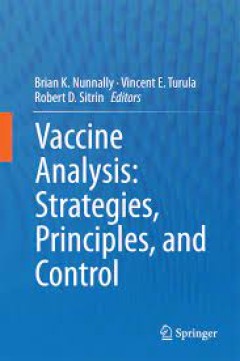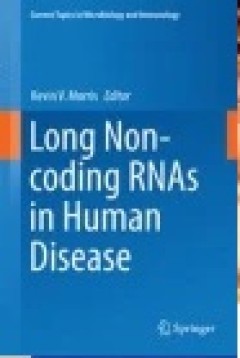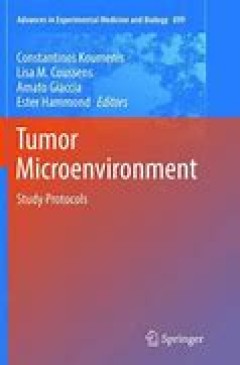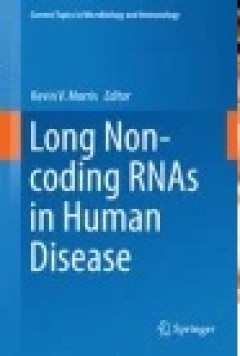Filter by

Mesenchymal Stem Cells and Immunomodulation
This essential volume explores mesenchymal stem cells (MSCs) and their potential to suppress immune-mediated inflammation. The chapters examine applications in autoimmune diseases such as lupus, rheumatoid arthritis and multiple sclerosis; blood cancers such as leukemia and lymphoma; and reproductive complications, specifically pre-term labor and use of MSCs in vitro and in animal models to dis…
- Edition
- 1
- ISBN/ISSN
- 978-3-319-46731-3
- Collation
- XI, 85
- Series Title
- Stem Cell Biology and Regenerative Medicine
- Call Number
- -

Familial Mediterranean Fever
This book, written by very well known opinion leaders in the field, covers all aspects of familial Mediterranean fever, the most common monogenic autoinflammatory disease. The opening chapters explain the genetic basis of the disease and provide insights into the pathogenesis derived from recent experimental studies. A large part of the book is then devoted to a detailed description of the typi…
- Edition
- -
- ISBN/ISSN
- 978-3-319-14615-7
- Collation
- VII, 162
- Series Title
- -
- Call Number
- -

Vaccine Analysis: Strategies, Principles, and Control
This book is an indispensable tool for anyone involved in the research, development, or manufacture of new or existing vaccines. It describes a wide array of analytical and quality control technologies for the diverse vaccine modalities. Topics covered include the application of both classical and modern bio-analytical tools; procedures to assure safety and control of cross contamination; co…
- Edition
- -
- ISBN/ISSN
- 978-3-662-45024-6
- Collation
- XII, 665
- Series Title
- -
- Call Number
- -

Agammaglobulinemia
This book provides an updated overview of agammaglobulinemia, a rare form of primary immunodeficiency which is considered the prototype of the congenital humoral defects, and which is characterized by the absence of peripheral B cells and very low serum immunoglobulin levels. The book opens by discussing the highly orchestrated early B cell development in the bone marrow and the genes involved …
- Edition
- Ed. 1
- ISBN/ISSN
- 978-3-319-22714-6
- Collation
- IX, 119
- Series Title
- Rare Diseases of the Immune System
- Call Number
- 610 AGAM a

Long Non-coding RNAs in Human Disease
This volume focuses on the roles of long non-coding RNAs (lncRNAs) in contexts ranging from human cancers to cardiovascular disease and ageing. The role of lncRNAs in X-inactivation and those lncRNAs derived from pseudogenes, past retroelements integrated within the human genome, as well as the role these pseudogene-derived lncRNAs play in cancer development are discussed in detail. Further, th…
- Edition
- -
- ISBN/ISSN
- 978-3-319-23907-1
- Collation
- -
- Series Title
- -
- Call Number
- -

Tumor Microenvironment Study Protocols
This volume covers the topics presented at the 3rd International Conference on Tumor Microenvironment and Cellular Stress by an international community of researchers. The conference brings together scientists to discuss different cellular and animal models of tumor microenvironment study and identify common pathways that are candidates for therapeutic intervention; stimulate collaboration betw…
- Edition
- -
- ISBN/ISSN
- 978-3-319-26666-4
- Collation
- 21 b/w illustrations, 64 illustrations in colour
- Series Title
- -
- Call Number
- -

Tryptophan Metabolism: Implications for Biological Processes, Health and Disease
This book discusses the relationship between cellular immunity and tryptophan metabolism, as well as its products, serotonin and melatonin, in the development of several diseases and reappraises the common signal transduction pathways of the neurodegenerative diseases, carcinogenesis, immune tolerance, inflammation, hypersensitivity reactions, neuropsychiatric disorders, in addition to bacteria…
- Edition
- -
- ISBN/ISSN
- 978-3-319-15630-9
- Collation
- 4 b/w illustrations, 17 illustrations in colour
- Series Title
- -
- Call Number
- -

Long Non-coding RNAs in Human Disease
This volume focuses on the roles of long non-coding RNAs (lncRNAs) in contexts ranging from human cancers to cardiovascular disease and ageing. The role of lncRNAs in X-inactivation and those lncRNAs derived from pseudogenes, past retroelements integrated within the human genome, as well as the role these pseudogene-derived lncRNAs play in cancer development are discussed in detail. Further, th…
- Edition
- -
- ISBN/ISSN
- 978-3-319-23907-1
- Collation
- -
- Series Title
- -
- Call Number
- -

Lasso Peptides: Bacterial Strategies to Make and Maintain Bioactive Entangled…
Lasso peptides form a growing family of fascinating ribosomally-synthesized and post-translationally modified peptides produced by bacteria. They contain 15 to 24 residues and share a unique interlocked topology that involves an N-terminal 7 to 9-residue macrolactam ring where the C-terminal tail is threaded and irreversibly trapped. The ring results from the condensation of the N-terminal amin…
- Edition
- -
- ISBN/ISSN
- 978-1-4939-1010-6
- Collation
- -
- Series Title
- -
- Call Number
- -

Multiple Sclerosis, Mad Cow Disease and Acinetobacter
The aim of this book is to publicise and bring to a wider audience the concept that the cause of two neurological diseases, namely multiple sclerosis (MS) and “mad cow disease” also known as “bovine spongiform encephalopathy” are related through exposure to a common microbe Acinetobacter which is found in human sinuses, on skin and in the soil. An infection is the cause of a neurologica…
- Edition
- 1
- ISBN/ISSN
- 978-3-319-02734-0
- Collation
- XVIII, 200
- Series Title
- -
- Call Number
- -
 Computer Science, Information & General Works
Computer Science, Information & General Works  Philosophy & Psychology
Philosophy & Psychology  Religion
Religion  Social Sciences
Social Sciences  Language
Language  Pure Science
Pure Science  Applied Sciences
Applied Sciences  Art & Recreation
Art & Recreation  Literature
Literature  History & Geography
History & Geography